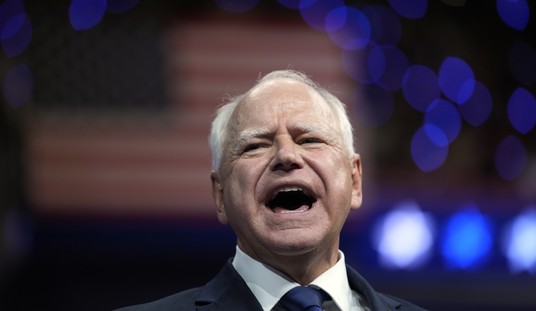Over the weekend, the Minneapolis Star/Tribune (“the Strib” to Minnesotans) released one of its in-house “Minnesota Polls” – which has been, since the mid-1940’s, the brand-label poll of Minnesota political opinion by Minnesota’s marquee news outlet.
Over the past couple of years, I’ve been doing a lot of analysis on the “Minnesota Poll”; to put it bluntly, it’s been a travesty since the late 1980s. Its most annoying – or fraudulent, if you’re feeling less charitable – habit is the fact that it always under-reports Republican performance, especially in the polls it releases the Sunday before election day every two years, for Senate, Governor and President as well as key Constitutional referenda. While the Strib writes this off to statistical noise, analysis shows that this phenomenon has been a universally one-way thing since 1988; it shorts Republican performance at three times the rate it shorts the DFL. And the closer the election eventually turns out, the more pronounced the tendency; in other words, if the DFL is heading to a complete blow-out (as in the 2006 Senate race), the more accurate the polling turns out to be, whereas in razor-close races (like the 2010 gubernatorial race, in which Mark Dayton beat Republican Tom Emmer by four tenths of a point) the more ludicrously inflated the margin of the poll the Strib drops in that last, vital pre-election paper.
They released three polls over the weekend – on results for the Presidential race and the Constitutional initiatives that would define Marriage and require ID to vote in Minnesota elections.
And while the polls cover Minnesota, the analysis is germane for everyone.
———-
The results appear to the the sorts of things you expect in a state whose last two high-profile elections – the 2010 Governor’s race and the 2008 Franken-Coleman Senate battle – end in recounts decided, in the case of Franken/Coleman, by a margin of under 300 votes.
- The Voter ID Amendment, the Strib claims, is leading by a tight 52% in favor, 44 against margin with 4% undecided.
- The Marriage Amendment tallies an even tighter lead; 49 in favor, 47 opposed, with 4% undecided. This is vital; under Minnesota election law, Constitutional initiatives must pass by a majority of the ballots cast. Ballots left unmarked are countes as “No” votes. If these numbers persist ’til election day, the Marriage Amendment loses.
- President Obama is shown with a comfortable 48-40 lead over Mitt Romney, with libertarian Gary Johnson tallying another 5% of the vote.
At face value, this would tend to confirm the conventional wisdom; Minnesota is a very split state that still votes Democrat for the top of the ticket.
But to get to the real truth, you have to do something few Americans, and very very few in the Strib’s readership, ever do; look at the numbers that go into the poll. These aren’t even a part of the actual stories about the poll, in the online version; they’re buried in a sidebar link. But they’re there.
And the story they tell is a fairy tale (I’ve added emphasis):
The self-identified party affiliation of the random sample is: 41 percent Democrat, 28 percent Republican and 31 percent independent or other.
The pollsters – Mason-Dixon, this year; the Strib fired its in-house staff in 2007, subbing the polls out to Princeton Research in 2010 and switching to Mason Dixon this year – would have you believe that there will be 13% more Democrats than Republicans at the polls this fall.
But recent elections reveal this as madness:
- In 2008 – a banner year for Democrats, nationally and in stereotypically blue Minnesota – the partisan split was 39% Democrat, 33% Republican and 28% various flavors of Independent (a little under half of whom voted for the Independence Party, best known as Jesse Ventura’s vehicle).
- In 2010 – the year the GOP flipped both chambers in the State Legislature and came within a few thousand votes of winning the Governor’s race – the breakout was 38% Democrat, 34% GOP and 26% independent and Independence.
The Strib would have you believe that the DFL (Minnesotan for “Democrats”) has gone up three points since the wave election of 2008, and the GOP has dropped six from its performance in 2010?
Why yes, they do; according to the Strib’s Rachel Stassen-Berger, “Brad Coker, managing director of Mason-Dixon Polling & Research, which conducted the poll for the Star Tribune, said those numbers are consistent with what he has seen over the years”, but neither explains precisely why.
The Strib’s partisan breakdown is very clearly balderdash. Let’s try this:
- Roll the partisan breakdown back to something more closely suggested by history, something between 2008 and 2010 – let’s say 38% Democrat, 34% Republican, similar to 2010. This means 3% lower DFL turnout, and 6% higher GOP, than is shown in the Minnesota Poll.
- Apply the various partisan levels of support for or against each measure or candidate – which are in the sixties for the Marriage Amendment, with Democrats in the high seventies against both Amendments, the GOP in the eighties in favor of the Voter ID Amendment, and with both parties in the nineties for their parties Presidential candidate (Democrats 91% for Obama, Republicans 96% for Romney), and…
- …add or subtract appropriately,
- Voter ID passes by 57/42 – which is very close to the 2:1 margin most other polls have shown.
- Marriage Amendment becomes more like 53.5% for, roughly 44.5% against – which is outside the margin of error and means even if every single undecided voter votes “no” or leaves the ballot blank for the issue (which is treated the same way under Minnesota election law). the amendment passes by a sizeable margin
- The Presidential race is actually 47.7% Obama, 45.8% Romney.
Viewed with extrapolations on a more realistic turnout model, it’s fairly clear that Voter ID is going to win big, the Marriage Amendment isn’t as close as its detractors would claimn, and our presidential race is within two points.
So why is the partisan split shown in the Minnesota Poll so ludicrous?
———-
The Star/Tribune, especially at the editorial-board level, is famously biased to the left, even among newspapers.
To a cynic, the answer is as obvious as the distortion in the numbers themselves; the Strib and their various pollsters are well aware of the “Bandwagon Effect” studied by Dr. Alfred Mehrabian, which noted that negative poll numbers do drive down election results for candidates who are shown to be losing. Published in the Journal of Applied Social Psychology in 1998, it noted:
Results of two experimental studies described in this article constituted clear experimental demonstration of how polls influence votes. Findings showed that voters tended to vote for those who they were told were leading in the polls; furthermore, that these poll-driven effects on votes were substantial.
And there’s your lesson nationwide; from the mass of AP and WaPo polls with absurd D+7 samples showing Obama with comfortable leads, to Nate Silver’s NYTimes poll analysis that shows Obama well-ahead in Minnesota – using the Strib Minnesota Poll as a key input to his findings, it’s reasonable to say “OK, let’s say you, the media, are not jiggering the figures to suppress Republican turnout – if, hypothetically, you were, how would they be any different?”
I’m still waiting on that answer.
This post was promoted from GreenRoom to HotAir.com.
To see the comments on the original post, look here.








Join the conversation as a VIP Member